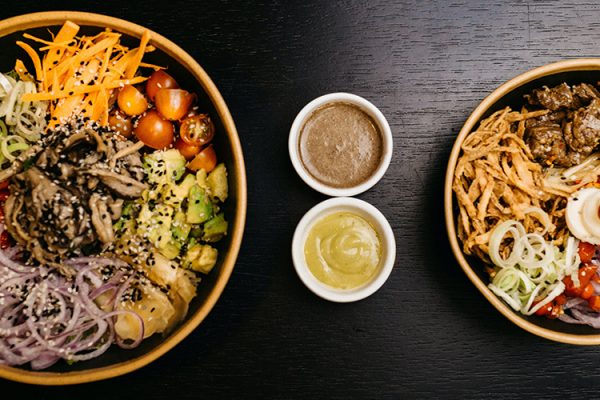For people who make their living from the labor of their bodies, keeping those bodies in peak working order is critical. In addition to exercise, keeping healthy requires making sure your diet is actually providing the nutrition your body needs.
Nutrition is kind of a vague and mystifying concept for most people. We know that food provides nourishment for our bodies and that eating “healthy” is good for us, but what exactly that means for the way we should structure our diets can be nebulous at best.
The first installment in this series is about the basics of dietary nutrition: the general what, why, how much and from where. (Obligatory disclaimer: I’m not a doctor or nutritionist, just an excellent researcher striving to be as healthy as I can and trying to share that with you.)
Surprising no one, the most important subject in the topic of nutrition is the nutrients. Specifically, “essential” nutrients: the ones your body can’t make enough of, if any, on its own, and depends on food to provide.
The big three are proteins, carbohydrates (gasp!) and fats (double-gasp!!). These three nutrient groups are the foundation of a healthy diet. The support beams are vitamins and minerals — no less vital, but needed in smaller quantities.
Proteins
Proteins are collectively responsible for building and repairing our cells, oxygenating our blood, regulating our hormones and creating digestive enzymes that let us process the nutrients from our food.
Proteins are made of compounds called amino acids, several of which fall under the umbrella of essential nutrients. Animal products like meat and fish, eggs and dairy tend to contain all of the essential amino acids and are, therefore, considered complete proteins. Most plant proteins are missing one or more of the essential amino acids, so they need to be combined to ensure you get the full range of necessary nutrients if you eat a solely plant-based diet.
Carbohydrates
Carbohydrates come in three forms: sugar, starch and fiber. The first two are what people most commonly think of as “carbs” and are a major source of energy for the human body. They not only provide you with fuel for your muscles, but also for your brain and central nervous system. Just thinking and feeling requires a lot of energy, especially for an animal with a large and complex a brain as humans have!
The proportions of the types of carbs in your diet is more important to nutritional health than the overall amount. Carbohydrates from whole grains and non-starchy produce provide additional nutrients like vitamins in addition to energy and should outnumber less-nutritious, highly-processed white starches and sugars for a healthy balance.
Fiber is a carbohydrate that your body actually can’t digest but is perhaps most valuable as fuel for your gut flora, the beneficial bacteria in your intestines. Fiber is found in most plant-derived foods in varying amounts, which are better sources than dietary supplements.
Fats
Most people will struggle to reconcile the necessity of fat with the idea of a nutritionally healthy diet. However, in the words of Julia Child, “you need some fat in your diet, or your body can’t process your vitamins,” among their many other functions.
Like with carbs, the type of fat is more important than the quantity. Getting most of your fats from healthy oils — from nuts and seeds and fruits and vegetables like avocados and olives — and fatty fish ensures sufficient quantities of essential omega-3 and omega-6 fatty acids in your diet.
Vitamins and Minerals
There are 13 essential vitamins — A, C, D, E, K and the eight B vitamins — as well as dozens of trace minerals — including calcium, iron and sodium — that you need for best health and proper functioning.
A well-balanced diet and a typical healthy digestive tract mean that getting most of your vitamin and mineral requirements from your food rather than supplements is fairly easy. The exception is vitamin D, and the second article in this series will cover vitamins in more detail to give you a better idea a why we need them and where we get them from.
If you’re looking for a starting point for improving your diet, I’d recommend trying to think about healthy food more in terms of proportions than total amounts. Caloric requirements are highly subjective and dependent upon one’s individual body and lifestyle. Ideally, the average person’s diet should be about half fruits and vegetables, one-quarter grains or starches, and one-quarter protein. Maintain moderation, as well — these nutrients are necessary, but more isn’t always better.
And remember to stay hydrated!
—
Monday Lovelace is a queer Black writer and graphic designer out of the Pacific Northwest. They’re out here to live their best life and help others do the same. Contact Lovelace via monday@ynotcam.com.











[…] it’s your ol’ pal Monday with more nutrition information! Last time we went over the basics of dietary nutrition, and now we’re going deeper into the micronutrient world, specifically […]
[…] out Health and Nutrition Part I (the basics) here and Part II about vitamins […]